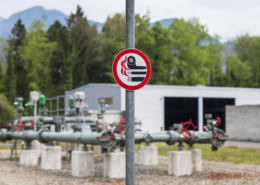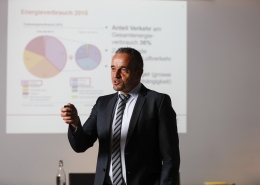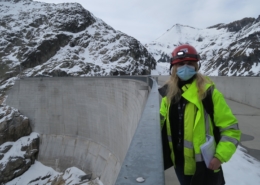The Global Initiative to Combat Nuclear Terrorism (GICNT) is a voluntary international partnership of 86 nations and five international organizations that are committed to strengthening global capacity to prevent, detect, and respond to nuclear terrorism. The GICNT works toward this goal by conducting multilateral activities that strengthen the plans, policies, procedures, and interoperability of partner nations. The United States and Russia serve as Co-Chairs of the GICNT.
The GICNT organized the “Technical Reachback Workshop” (the word “reachback” means real-time expert remote Support) on March 28-30 2017, at the Joint Research Centre (JRC) in Ispra (Italy). Representatives from 25 nations attended the workshop.
This workshop promoted the discussion among technical, scientific, and policy experts from the nuclear security field regarding the roles, responsibilities, challenges, and opportunities of technical expert support within Nuclear Security Detection Architectures. Through presentations, facilitated panel discussions, and demonstrations, the workshop raised awareness towards technical reachback organization, identified best practices and ways forward for Technical Expert support. How to share best practices among partners was also a welcome scope of the workshop. The preparedness to the worst was considered necessary since last minute improvisation cannot produce an effective Response.
Why do we need reachbacks?
Worldwide 1.4% of container/truck activate the nuclear portal alarm at boundary check. These alarms are:
- false alarms (e.g. due to cosmic radiation),
- false positive alarms (e.g. due to medical isotopes, fertilizers, sand, ceramic and so on),
- positive alarms (e.g. due to accidental contamination of goods), and
- real positive alarms (due to malevolent activities).
Sometimes, the front line officers have difficulties to understand the correct procedure after an alarm. Even for developed countries, it is unrealistic to have nuclear experts at every control area. It follows that the only realistic solution is to create a reachback that can be contacted at any time for technical support. Without expert support, not only wrong decisions may follow, but radioactive contamination of persons and the environment are highly probable.
The reachback supports the front line officers during manual measurements, provides the scientific interpretation of the data collected on site, and with operational advice, based on collected experiences, helps the law enforcement officers. Since it coordinates the various stakeholders on site (but also the responsible not on site) and contacts the response forces (in case it is necessary) reduces both the probability of stress-related errors and of improvisation at the front line.
Not every country has (and will have) the resources for a full scope reachback. Some nations already provide support to countries in need. For example, the Department of Energy of the US supported with its reachback the Olympic Games in Brazil and during acute emergencies several other countries (e.g.: Djibouti, Georgia, Mexico, Malaysia and so on). China with the help of the USA established a reachback in Yangshan Deep Water Port (close to Shanghai). At this port, 10 million containers already went through the detection portals, and front line officers investigate alarms with the supported of reachback. Russia is helping with the training of land customs officers in China and other neighboring nations.
Around the world, real positive alarms are rare. These deliberate criminal activities are related to minor criminal gangs that try to smuggle radioactive materials with the clear aim to sell them on the black market. In the last few years, no more structured criminal activities were detected. Nevertheless, the increase in detection of radioactive contaminated goods (e.g. detection in Canada and Holland of goods containing concentration of radioactive thorium above limit) is worrying. After several years of nuclear control at the boundaries, we can conclude that these efforts are clearly justified (even by considering the sole protection of population’s health), and reachbacks provide high quality handling of emergencies.
Giuseppe Biino, Safeguards, SFOE


 Flurin Bertschinger / Ex Press /BAFUGut geschützt vor der Katastrophe: Störfallvorsorge bei Erdgasleitungen
Flurin Bertschinger / Ex Press /BAFUGut geschützt vor der Katastrophe: Störfallvorsorge bei Erdgasleitungen  SwisscomÉconomiser l’énergie grâce à des solutions intelligentes
SwisscomÉconomiser l’énergie grâce à des solutions intelligentes  UVEKBremst Corona die CO2-Ziele bei den Neuwagen aus?
UVEKBremst Corona die CO2-Ziele bei den Neuwagen aus?  BFEIm Namen der Sicherheit – Wie BFE-InspektorInnen die Staumauern kontrollieren
BFEIm Namen der Sicherheit – Wie BFE-InspektorInnen die Staumauern kontrollieren 


Dein Kommentar
An Diskussion beteiligen?Hinterlassen Sie uns Ihren Kommentar!